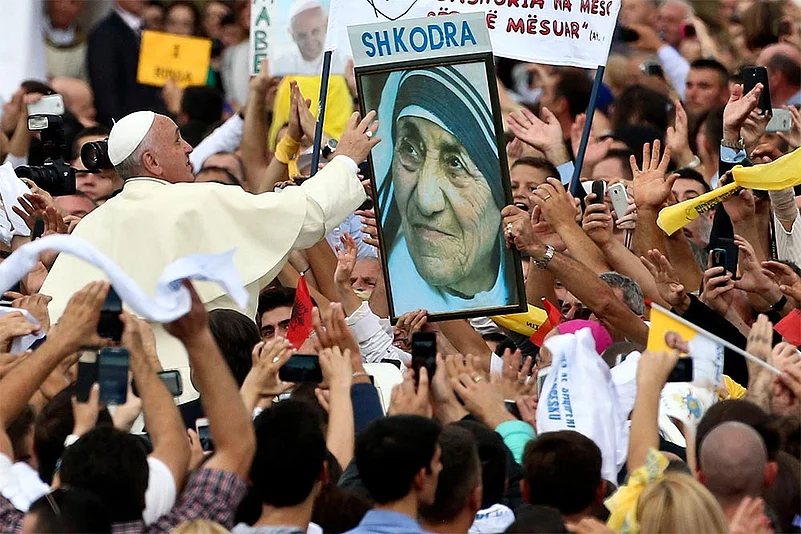In 1971, my father, poet Narendra Dev, passed away, leaving behind a detailed to-do list for me, beginning with how to rent a hearse to carry him to the newly opened electric crematorium, how not to not to arrange a kangali bhojan (feeding the poor) but to give the money to Mother Teresa. That was my introduction to Mother Teresa, whom I knew as a European nun taking care of orphans and the homeless and dying in Calcutta. We followed Baba’s wishes.
Next time I met Mother Teresa, in Mother House, with my elder daughter Antara, who was 15 and wished to serve the destitute in Nirmal Hriday. Mother was happy, but was strictly against a 15-year-old serving those breathing their last. As Nirmal Hriday was not a positive atmosphere for a child to be in, she strongly objected to it and invited Antara to join her in looking after the homeless kids, to come and play with the children whenever she had time.
Once I was in Bellaaggio, Italy, on Lake Como, as a visiting writer. We used to take small private boats and sail down to the little villages on the lake, to enjoy the spring flowers, the lovely cottages and the beautiful hilly roads. Once we visited a little gift store in a tiny, lakeside village. As I selected my souvenirs, I noticed a picture of Mother Teresa on the cover of an Italian book. I blurted out, “Look, look, there is a friend from my city!” My American friend Valery and the shopkeeper looked around; there was no one else. I pointed to Mother Teresa and said, “She is from my city.” There was a magical change in the atmosphere. “U from Kalkutta? U see Mother Teresa?” The shopkeeper and his wife refused to take any money for the small souvenirs they had packed for me and treated us both to coffee.
I had a similar experience in Colorado, in the Rocky Mountains, when I went with a group to visit an old nunnery. The moment the nuns knew I was from Calcutta and had met Mother Teresa, I became a centre of attention. All the nuns surrounded me and wanted me to speak about Mother. It has been great to witness the overwhelming love she has earned all over the world.
The daughter of one of my American friends was going through a lot of trouble—she had bulimia, then it turned to anorexia, she became exceedingly skinny and wanted to come to India to practise spiritualism. In those days, India was a place for smoking marijuana and what not, along with doing yoga in order to find your ‘inner self’. Her parents could not stop her, she was an adult with a passport. So she arrived, looking for an ashram. I took her to Mother Teresa. Practising humanism was the best spiritual practice, I thought—a constructive religious therapy. She went, talked with her and stayed on, working with her. She turned out to be a calm, warm, balanced person as time passed, and finally went back to college in the US.
Mother Teresa is going to receive sainthood next month in Vatican City. We are all excited in India; this is a new experience for us. We are a country of saints from every religion, but St. Xavier is the only Christian saint I know, whom we have here with us in India. We are waiting to witness the auspicious ceremony in Vatican City.
But I wonder whether that ceremony, where she will be one among several to be sainted, will surpass the grandeur and excitement with which India bade her goodbye in Calcutta. We had a Left Front government then, but the fabulous farewell she received from her beloved city and adopted country still amazes me. It was a loving farewell for a caring mother of all homeless children. The whole city was focused on this single event all day long; all traffic was stopped to let the enormous procession pass through the heart of the city, and TV had aerial coverage following the procession. We have all heard about the unruly crowd at Rabindranath Tagore’s funeral procession in 1941. When it came to Mother Teresa, the Communist government of Bengal forgot its attitude to religion, and remembered only that which rises above religion and politics.






















